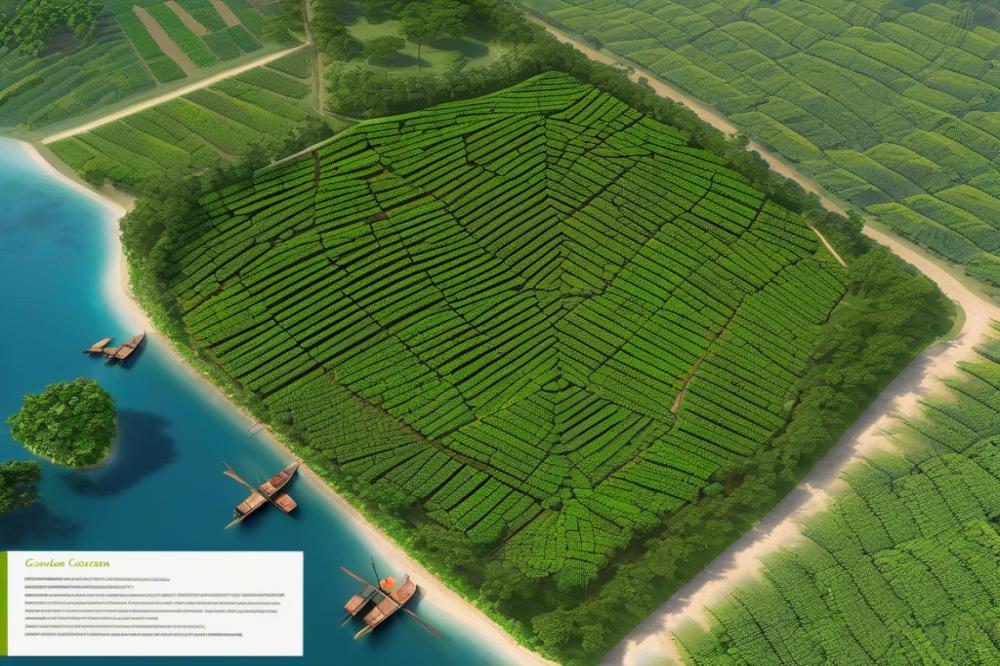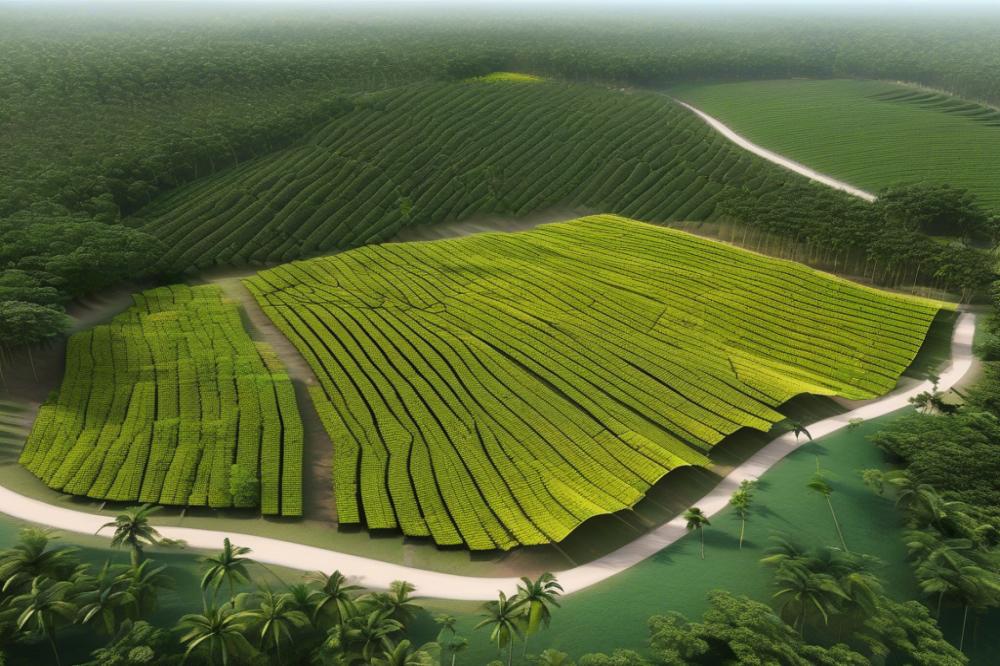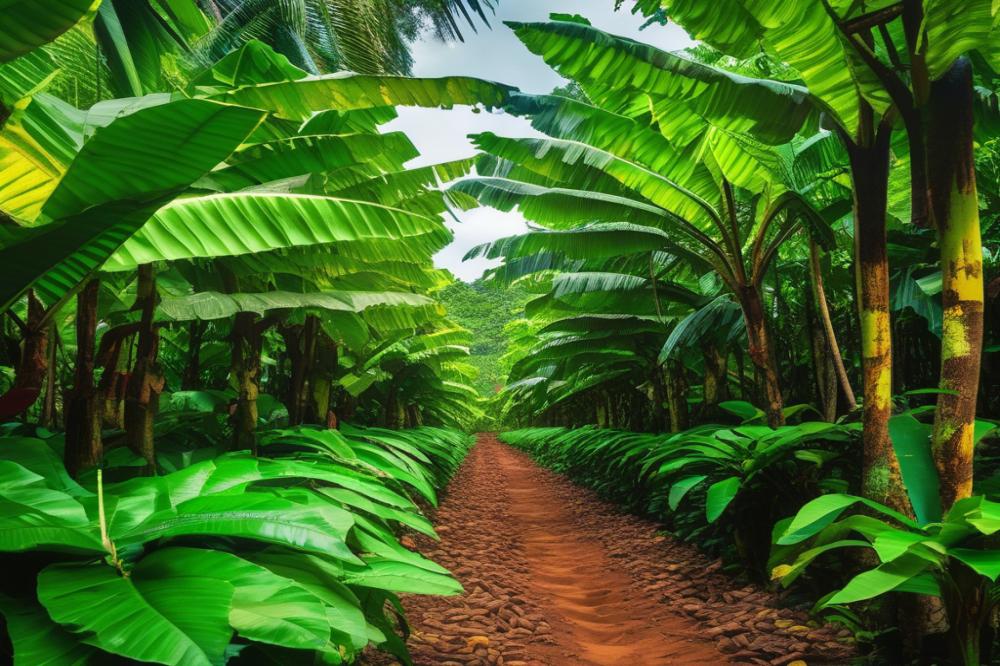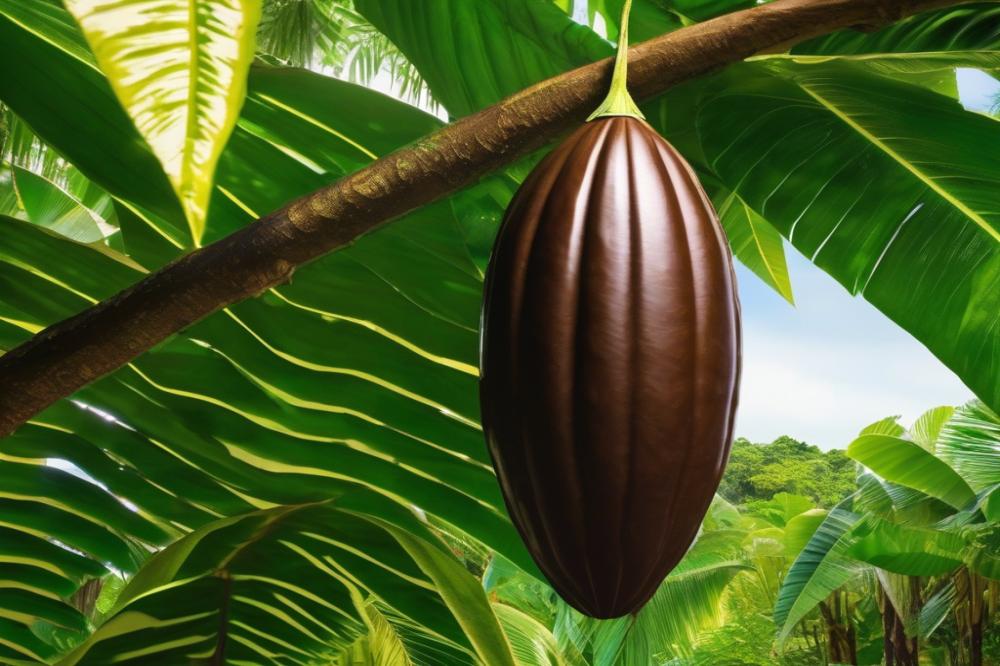The Impact of shade trees on Cocoa plant growth
The Cocoa plant, known for its rich beans, plays a vital role in the global economy. Millions rely on chocolate, making cocoa a significant agricultural product. In many tropical regions, the demand for cocoa has soared over the years. Farmers are continuously seeking methods to boost productivity while safeguarding the environment. This quest often leads to innovative farming systems.
One such system incorporates trees alongside crops, creating a unique blend that enhances agricultural practices. shade trees contribute tremendously to this balance. They offer more than just a canopy; they support biodiversity and promote soil health. Their presence can help maintain a stable microclimate, which is crucial for sustaining cocoa cultivation.
Research shows that the right mix of trees can lead to yield improvement for the cocoa plant. Improved moisture retention is one of the benefits offered by these trees. This natural process helps to mitigate drought effects and reduces the need for irrigation. Furthermore, shade trees act as a natural barrier against pests, supporting the idea of sustainable agriculture.
The purpose of this article is to delve deeper into the relationship between cocoa and shade trees. Understanding their impact reveals much about achieving an ecological balance in farming. We will explore how integrating these trees can enhance cocoa plant growth and support farmers in their endeavors.
The Role of Shade Trees in Cocoa Plant Growth

Shade trees play a vital role in agroforestry systems. They provide numerous functions that benefit the overall ecosystem. Protecting cocoa plants from harsh sunlight is one of their primary roles. Additionally, these trees help in creating a balanced ecological environment. This balance is essential for the development of diverse flora and fauna.
The connection between shade trees and cocoa plants is significant. Cocoa thrives in conditions where temperature and humidity are regulated. Trees help create a microclimate, shielding cocoa plants from extreme weather conditions. This relationship extends beyond simple protection; it nurtures soil health. The roots of trees improve soil structure and mitigate erosion, which is crucial for cocoa cultivation.
During various growth stages, the benefits of a tree canopy are clear. In the early stages, young cocoa plants require shelter from direct sunlight. This shaded environment promotes better growth and reduces stress. As plants mature, trees continue to provide critical support. They help with moisture retention, ensuring that cocoa plants receive adequate hydration. A tree canopy also offers natural pest control. Predatory insects find refuge there, keeping harmful pests at bay.
Moreover, the presence of shade trees contributes to significant yield improvement. Studies have shown that cocoa farms with adequate tree cover often produce more fruit than those without. This productivity aligns with sustainable agriculture practices. By maintaining biodiversity, farms can withstand diseases better and support a broader range of species. Overall, integrating shade trees into cocoa farming not only boosts cocoa plant growth but also fosters a rich, thriving ecosystem.
agroforestry and Sustainable Agriculture

Agroforestry practices combine farming with forestry. This method allows farmers to grow crops and trees together. Many cocoa farmers are adopting this approach to enhance their production.
Integrating trees into cocoa farming creates a beneficial environment. The tree canopy provides shade, which is essential for cocoa plants. This protection helps maintain a favorable microclimate, essential for growth.
Soil health improves with the addition of trees. Their roots help prevent erosion and increase moisture retention. This ensures that cocoa plants receive adequate water, especially during dry spells. Healthy soil supports better nutrient availability, leading to yield improvement.
Incorporating shade trees also promotes biodiversity. Different species coexisting in an area help maintain ecological balance. More species mean fewer pests that can harm cocoa plants.
Farmers can control pests naturally through this diverse environment. A variety of plants attracts beneficial insects that fight off harmful pests. This reduces the need for chemical pesticides, which is a significant step towards sustainable agriculture.
In the long run, integrating trees into cocoa farming provides numerous benefits. Improved soil health, better pest control, and increased biodiversity create a thriving ecosystem. Farmers can enjoy higher productivity while preserving the environment.
Adopting agroforestry does not only support cocoa plants but also builds resilience. It allows farmers to adapt to changing climate conditions. Thus, agroforestry is a step toward a more sustainable future for cocoa cultivation.
Biodiversity and Ecological Balance

The presence of trees plays an important role in the overall biodiversity of cocoa farms. By creating habitats for various species, these plants enhance the richness of the ecosystem. Diverse flora and fauna contribute to more resilient farming systems. Birds, insects, and other creatures thrive in this environment, fostering a balanced ecological system.
A mix of species encourages beneficial organisms that aid in pest control. Natural predators emerge to keep pest populations in check. This reduces the need for chemical pesticides, which can harm the environment. With a variety of wildlife present, cocoa plants benefit from fewer diseases, boosting health and productivity.
The tree canopy influences microclimates, creating cooler and more humid conditions. As a result, cocoa plants enjoy improved growing conditions. Moisture retention becomes more effective, which is crucial in areas prone to drought. Such benefits enhance soil health by allowing organic matter to break down more efficiently.
Sustainable agriculture practices thrive in environments where biodiversity flourishes. Crop yield improvement becomes easier through natural interactions within the ecosystem. Farmers can enjoy stronger harvests while promoting environmental stewardship.
Overall, the presence of trees brings various advantages. Cocoa farming systems that embrace these principles not only support their crops but also nurture the surrounding wildlife. Emphasizing ecological balance, these systems create a seamless connection between agriculture and nature.
Soil Health and Moisture Retention
Soil health plays a vital role in cocoa cultivation. Healthy soil is rich in nutrients, which are essential for the growth of cocoa plants. Without good soil, cocoa trees struggle to thrive. Fertile ground boosts plant vigor and, ultimately, yield improvement. Farmers need to focus on maintaining soil quality through various practices.
One way to enhance soil structure is through agroforestry practices. By incorporating trees within cocoa farms, farmers can improve the richness of the soil. These trees contribute organic matter through fallen leaves and branches. Over time, this decays and adds essential nutrients, creating a healthier environment for cocoa plants. Besides, these trees also support biodiversity, providing habitats for various organisms.
Additionally, trees create a beneficial microclimate. Their canopy provides shade, lowering temperatures in the immediate area. This cooling effect leads to reduced evaporation from the soil. Enhanced moisture retention becomes crucial, especially during dry periods. Healthy, moist soil encourages robust cocoa plant growth. Various plant roots work together to prevent soil erosion, further securing the land’s health.
Moreover, trees play a significant role in pest control. A diverse ecosystem helps to keep pest populations in check naturally. With fewer pests threatening cocoa plants, farmers rely less on chemical pesticides. This practice promotes sustainable agriculture, protecting both crops and their environment.
Overall, the presence of trees on cocoa farms contributes to ecological balance. They support soil health, improve moisture retention, and offer natural pest management. These benefits are not just limited to the cocoa plants. They positively impact the entire farming system.
Yield Improvement and Economic Benefits
Incorporating trees into cocoa farming can lead to significant yield improvement. Farmers often see better harvests when their cocoa plants benefit from a supportive environment. These trees create a microclimate that moderates temperature extremes. Consistent shade helps maintain humidity, which is crucial for cocoa pods.
Improved soil health is another advantage linked to this practice. The roots from trees contribute to soil structure, allowing better water infiltration. Organic matter from fallen leaves enriches the ground, promoting biodiversity. Healthy soil supports vigorous plant growth and higher yields.
Economic benefits for farmers arise from these yield increases. More cocoa means greater income, supporting family needs and community development. With the right support, farmers can transform their operations, leading to more sustainable agriculture. This financial stability enables investment in other areas, such as education or health care.
Case Studies Showcasing Successful Integration
Several case studies illustrate the positive effects of adding a tree canopy to cocoa farms. In one instance, a farm in Ghana adopted agroforestry practices. The integration of shade trees led to a remarkable 30% increase in cocoa production over three years. Farmers reported fewer pests, thanks to the ecological balance enhanced by this diversity.
In another example, a cooperative in Ecuador embraced these methods with outstanding results. Growers noticed moisture retention improved due to shaded areas. This, along with organic farming techniques, boosted their overall yields significantly. Increased biodiversity also played a role in reducing chemical use, promoting a healthier ecosystem.
These real-world examples reveal how shade trees impact not just cocoa plants, but entire farming communities. By fostering these practices, farmers are not only increasing their profits but also contributing to environmental sustainability. The notion that trees can work hand in hand with crops is proving to be a beneficial strategy for many.
Final Thoughts on Shade Trees and Cocoa Growth
Understanding the impact of these trees on cocoa plants is vital. Studies repeatedly show that such trees play a crucial role in enhancing soil quality and retaining moisture. They provide shelter from extreme weather, which allows cocoa plants to flourish. Increased biodiversity within these systems also leads to a healthier environment, benefiting both crops and wildlife. It’s clear that integrating trees into cocoa farming offers numerous benefits.
Call to Action for Farmers and Policymakers
Farmers should consider adopting agroforestry practices on their cocoa farms. It’s time to embrace the many advantages that come with this method. Policymakers can support these efforts by creating incentives for growers who implement environmentally friendly solutions. Promoting education about the benefits of shade trees can inspire more farmers to make this change. Collaboration between farmers and local governments may lead to lasting improvements in the cocoa industry.
Promoting Sustainability in Cocoa Farming
Final thoughts remind us of the importance of protecting our natural resources. Encouraging the use of shade trees can drive sustainability in cocoa production. With collaboration, farmers can improve yields while safeguarding the environment. Together, we can build a better future for cocoa farming that aligns with the principles of sustainability. The path forward lies in a more holistic approach, combining agriculture with nature for the benefit of all.



